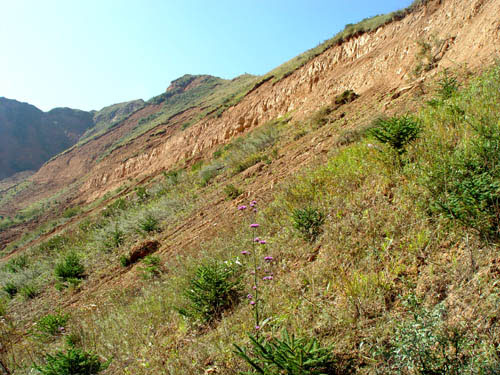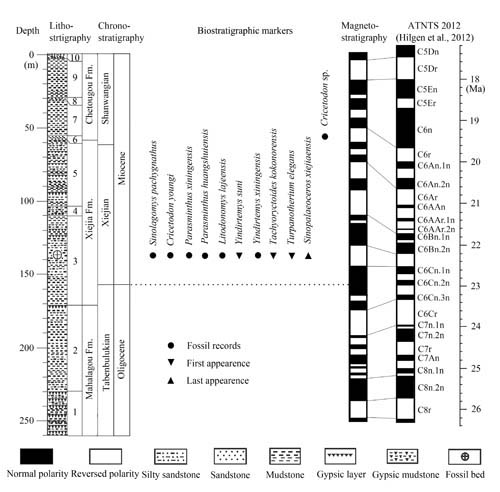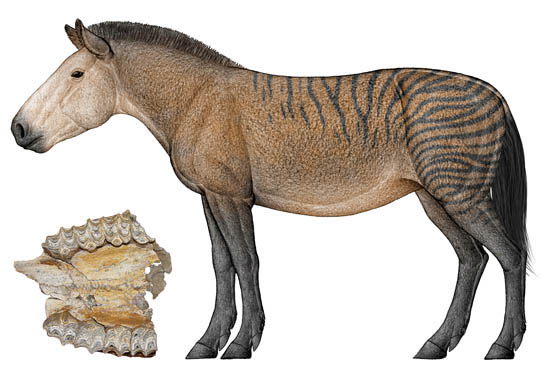China's Neogene terrestrial strata are widely exposed. For example, the Linxia Basin in Gansu develops continuous strata from the Oligocene to the Pleistocene, covering the complete Neogene period and rich in mammal fossils. The rapidly evolving mammals are divided into An effective means to compare Neogene continental strata. Therefore, a unified Neogene mammalian biostratigraphic framework has been established in China very early, and mammal stages have been named. Due to the corresponding relationship between the "period" of geological time and the "stage" of chronostratigraphic units, China's Neogene has seven consecutive stages. From bottom to top, they are the Xiejiaian, Shanwangian, Tungurian, and Baguian stages of the Miocene. He stage, Baode stage, and Gaozhuang stage and Mazegou stage of Pliocene.
In recent years, the research group of researcher Deng Tao from the Institute of Vertebrate Paleontology and Paleoanthropology, Chinese Academy of Sciences, has relied on a series of research results to combine fine biostratigraphy with paleomagnetic and isotope chronological methods on continuous sections to establish and The Neogene chronostratigraphic sequence of China with geological age calibration has been improved, and the relevant research results were recently published in Science China: Earth Sciences. According to the principles and rules of modern stratigraphy, candidate sections for the bottom boundary stratotype have been proposed for each stage of the Neogene in China. On this basis, a comprehensive comparison of the Neogene strata in various major regions has been carried out.
According to reports, China is better equipped than Europe to establish accurate Neogene biostratigraphic sequences on the Eurasian continent, because the Neogene continental basin sedimentation in Europe is less developed, and many famous mammal groups are found in fissure accumulations. .
Due to the widespread application of paleomagnetic dating methods in China's Neogene strata, the shortcoming of fewer isotope age determinations has been effectively overcome. Except for the comparison between the bottom boundary of the Tungurian and the bottom boundary of European terrestrial mammals, the bottom ages of the other stages of the Neogene in China after the latest research and improvement are all consistent with the bottom ages of the marine stages in the international stratigraphic chronology. Same age. In terms of biomarkers, the Neogene stages in China strive to use the first appearance of a single species of mammals as a reference, some of which represent local species replacements, and some of which represent intercontinental animal migration and diffusion events. For example, the bases of the two upper Miocene stages, the Bahe Stage and the Baode Stage, are marked by the first appearance of Hipparion dongxiangense and H. forstenae respectively. Their base ages correspond to the marine Tortonian (11.63 Ma) and Messinian (Messinian, 7.25 Ma) respectively.
This research was funded by the National Natural Science Foundation, the Chinese Academy of Sciences, the Ministry of Science and Technology, and the National Stratigraphy Committee.
Original link: http://engine.scichina.com/doi/10.1007/s11430-017-9155-4, http://engine.scichina.com/doi/10.1360/N072017-00221

Figure 1 Neogene stratigraphic outcrop in Linxia Basin, Gansu (Photo provided by Deng Tao)

Figure 2 Comprehensive stratigraphic section of Xiejia site in Xining Basin, Qinghai (photo provided by Deng Tao)

Figure 3 Fossils and restorations of the jaws of the three-toed equestrian horse (drawn by Chen Yu)

Figure 4 Distribution and comparison of terrestrial Neogene strata and mammal groups in China (photo provided by Deng Tao)
animal tags: horse evolution fossil mammal
We created this article in conjunction with AI technology, then made sure it was fact-checked and edited by a Animals Top editor.